DIY Dress-up Clothes: Imaginary Play Crafts for Kids
Are you ready to dive into the colorful and imaginative world of DIY dress-up clothes? Crafting unique costumes at home can be an incredibly rewarding experience, not just for you but also for your little ones. Imagine the joy on their faces when they transform into their favorite characters or create entirely new personas! It’s like opening a treasure chest filled with endless possibilities. In this article, we’ll explore various fun crafts and ideas that will inspire you to create fabulous costumes that ignite your children's creativity and encourage imaginative play.
DIY dress-up clothes are not just about fabric and thread; they are about sparking creativity and allowing kids to express themselves. When children dress up, they are not merely playing; they are stepping into different roles, developing stories, and exploring their emotions. This kind of imaginative play is crucial for their growth and development. It allows them to experiment with different scenarios, enhancing their social skills and emotional intelligence. Plus, it’s a fantastic way to bond with your kids while you work together to create something special.
So, what can you expect from this article? We’ll uncover the benefits of dress-up play, guide you through gathering materials, and provide you with some exciting theme ideas. We’ll also delve into the art of recycling old clothes and using fabric scraps, ensuring that you can create stunning costumes without breaking the bank. Whether you’re a seasoned crafter or a complete beginner, there’s something here for everyone. So grab your scissors, thread, and a sprinkle of imagination, and let's get started!
Engaging in dress-up play fosters creativity, social skills, and emotional intelligence in children. When kids put on costumes, they enter a world where they can be anything they want to be. This freedom to explore different identities helps them develop a strong sense of self and understand various perspectives. For instance, when a child dresses as a firefighter, they might learn about bravery and teamwork, while a princess costume might inspire them to explore themes of kindness and leadership.
Moreover, dress-up play encourages children to interact with their peers. As they role-play different characters, they learn to communicate, negotiate, and collaborate. These social interactions are vital for developing empathy and understanding the feelings of others. It’s like a mini-world where they can practice real-life skills in a safe and fun environment. Plus, let’s not forget the sheer joy and laughter that comes with imaginative play!
Gathering the right materials is essential for creating dress-up clothes. You don’t need to spend a fortune on fancy fabrics or expensive patterns. In fact, many of the best costume materials can be found right in your home! Think about old clothes, fabric scraps, and even everyday household items. Here’s a quick list of some common materials you might consider:
- Old t-shirts and dresses
- Fabric scraps from previous projects
- Cardboard boxes for props
- Buttons, ribbons, and other embellishments
- Face paint or makeup for character transformation
With just a little creativity, these items can be transformed into something magical. For example, an old sheet can become a ghost costume, while a few fabric scraps can be sewn together to create a colorful cape. The possibilities are endless, and the best part is that you can involve your kids in the process, making it a fun family activity.
Old clothing can be repurposed into fabulous costumes. Instead of tossing out those last-season outfits, consider how they can be creatively cut, sewn, or embellished for imaginative dress-up play. For instance, a long skirt can be transformed into a fairy costume with some glitter and a pair of wings. A pair of oversized pants could become a clown outfit with the addition of bright colors and a funny hat. The key is to think outside the box and let your creativity flow!
Learn how to make fun accessories using everyday items. Accessories can take a costume from ordinary to extraordinary! For example, you can create:
- Hats: Use cardboard to craft unique hats, or repurpose an old baseball cap with fabric and decorations.
- Masks: Cut shapes from cardboard or use paper plates to make character masks, painting them with vibrant colors.
- Props: Use sticks or empty bottles to create swords, wands, or other props that add flair to the costume.
Fabric scraps can be a treasure trove for costume creation. Instead of discarding those leftover pieces, consider how they can be stitched together to create unique dress-up pieces. You can make patchwork capes, colorful skirts, or even fun accessories like hairbands and sashes. This not only saves money but also teaches kids the value of recycling and being resourceful.
Basic sewing skills can elevate your DIY costume projects. Even if you’re not a sewing expert, there are plenty of simple techniques that beginners can use. For instance, learning how to sew a straight line can help you attach fabric pieces together, while hand-stitching can be used for embellishments. There are numerous online tutorials that can guide you through these techniques, making it easy to create professional-looking costumes without feeling overwhelmed.
Q: What age is appropriate for dress-up play?
A: Dress-up play is suitable for children of all ages! Even toddlers can enjoy simple costumes, while older kids can engage in more elaborate role-playing.
Q: How can I ensure the costumes are safe for my kids?
A: Always check for small parts that could be a choking hazard and ensure that any materials used are non-toxic and safe for children.
Q: Can I make costumes without sewing?
A: Absolutely! Many costumes can be created using fabric glue, safety pins, or even just by tying pieces together.
Q: What if I don’t have any crafting experience?
A: Don’t worry! Start with simple projects, and remember that the goal is to have fun and enjoy the creative process with your kids.

Benefits of Dress-up Play
Engaging in dress-up play is not just about slipping on a costume and pretending to be someone else; it’s a powerful tool for **child development**. When children immerse themselves in imaginative role-playing, they are not only having fun but also cultivating essential skills that will benefit them throughout their lives. From building **creativity** to enhancing **social skills**, the act of dressing up offers a myriad of benefits that can surprise even the most skeptical parents.
One of the most significant advantages of dress-up play is its ability to foster **creativity**. When kids don costumes, they step into different roles and scenarios, which encourages them to think outside the box. For instance, a simple pirate hat can transform a living room into a vast ocean, igniting their imagination and prompting them to create elaborate stories. This kind of imaginative play helps children develop their **problem-solving skills**, as they navigate through various scenarios and challenges in their pretend worlds.
Moreover, dress-up play significantly enhances **social skills**. When children play together, they learn to communicate, negotiate, and cooperate. Imagine a group of kids deciding who gets to be the superhero and who will play the villain; through this process, they practice important social dynamics like sharing, taking turns, and respecting others’ ideas. These interactions are crucial for developing **emotional intelligence** as children learn to express their feelings and understand those of their peers.
Furthermore, the benefits extend to the realm of **emotional development**. When kids dress up, they often explore different emotions and scenarios, which can help them process their feelings. For instance, a child might dress as a doctor to act out a situation where a toy needs help, allowing them to express empathy and compassion. This type of play can also serve as a safe space for children to confront fears or anxieties. By acting out scenarios, they can gain confidence and resilience, equipping them to handle real-life situations more effectively.
In addition to these developmental benefits, dress-up play can also be a fantastic way to **boost self-esteem**. When children don costumes that make them feel powerful—like a superhero or a princess—they often experience a surge of confidence. This newfound self-assurance can translate into other areas of their lives, from school to social interactions. It’s a beautiful cycle: the more they engage in imaginative play, the more confident they become, which in turn encourages them to explore even more creative avenues.
To sum it up, the benefits of dress-up play are profound and far-reaching. It’s not merely a fun pastime; it’s a vital part of childhood that nurtures creativity, social skills, emotional intelligence, and self-esteem. So, the next time you see your child donning a cape or a crown, remember that they are not just playing—they are learning and growing in ways that will last a lifetime.
For those interested in exploring the topic further, here’s a quick recap of the benefits:
- Creativity: Encourages imaginative thinking and storytelling.
- Social Skills: Promotes communication, negotiation, and cooperation.
- Emotional Development: Helps children express and process their feelings.
- Self-esteem: Boosts confidence through role-playing.
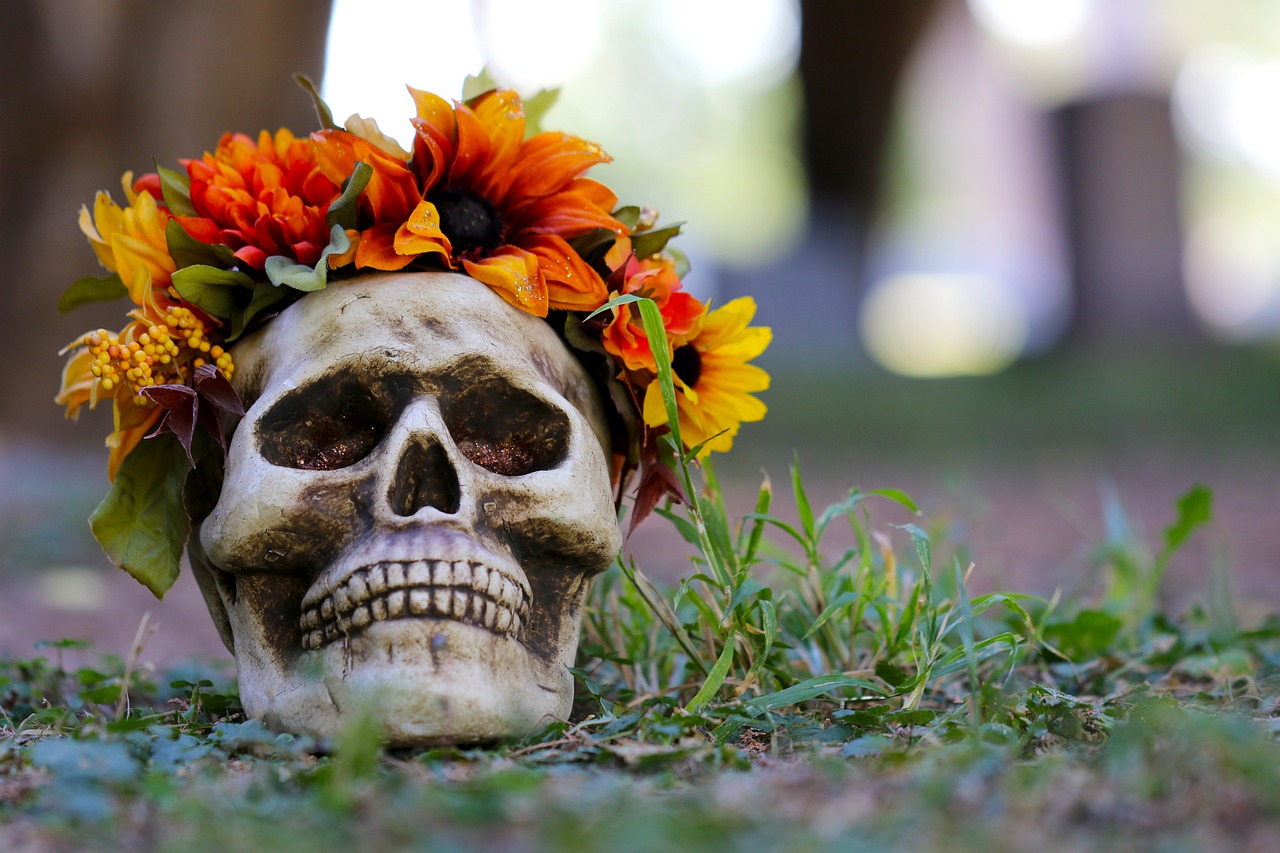
Materials Needed for DIY Costumes
Creating DIY costumes is a delightful adventure that opens the door to endless creativity. To embark on this exciting journey, you'll need to gather some essential materials that can transform your ideas into reality. Don’t worry; you don’t need to break the bank to create amazing dress-up clothes! Many of the items you’ll need can be found right in your home. Think of it as a treasure hunt in your own space!
First and foremost, consider old clothes. Those forgotten garments lurking in the back of your closet can become the foundation of your costume creations. A simple t-shirt can morph into a superhero's cape with just a few snips and stitches. Similarly, a pair of oversized pants can transform into a whimsical clown costume. Remember, the more creative you get, the more fun you'll have!
Next on the list are craft supplies. These can include:
- Fabrics of various textures and colors
- Ribbons and lace for embellishments
- Buttons, sequins, and beads for that extra sparkle
- Glue, scissors, and tape for assembly
Each of these materials can add unique flair to your costumes. For instance, fabric scraps can be stitched together to create a patchwork look, while buttons can be used as fun accents on hats or vests.
Don’t overlook household items that can double as costume components. Items such as:
- Cardboard boxes (perfect for making armor or props)
- Old hats or scarves (great for accessorizing)
- Plastic containers (can be transformed into cool helmets or shields)
These everyday objects can spark your imagination and help you think outside the box—literally! For example, a simple cardboard box can be painted and decorated to become a robot or a treasure chest.
Lastly, don’t forget about accessories. Accessories can make or break a costume! You can create:
- Wands from sticks or dowels
- Masks from paper plates or felt
- Jewelry from pasta or beads
These little touches can elevate your costume from good to spectacular! Think of accessories as the cherry on top of a sundae; they add that final touch of magic.
In conclusion, the materials needed for DIY costumes are all around you. By using old clothes, craft supplies, household items, and a sprinkle of imagination, you can create stunning costumes that inspire hours of imaginative play. So gather your materials, unleash your creativity, and let the dress-up adventures begin!
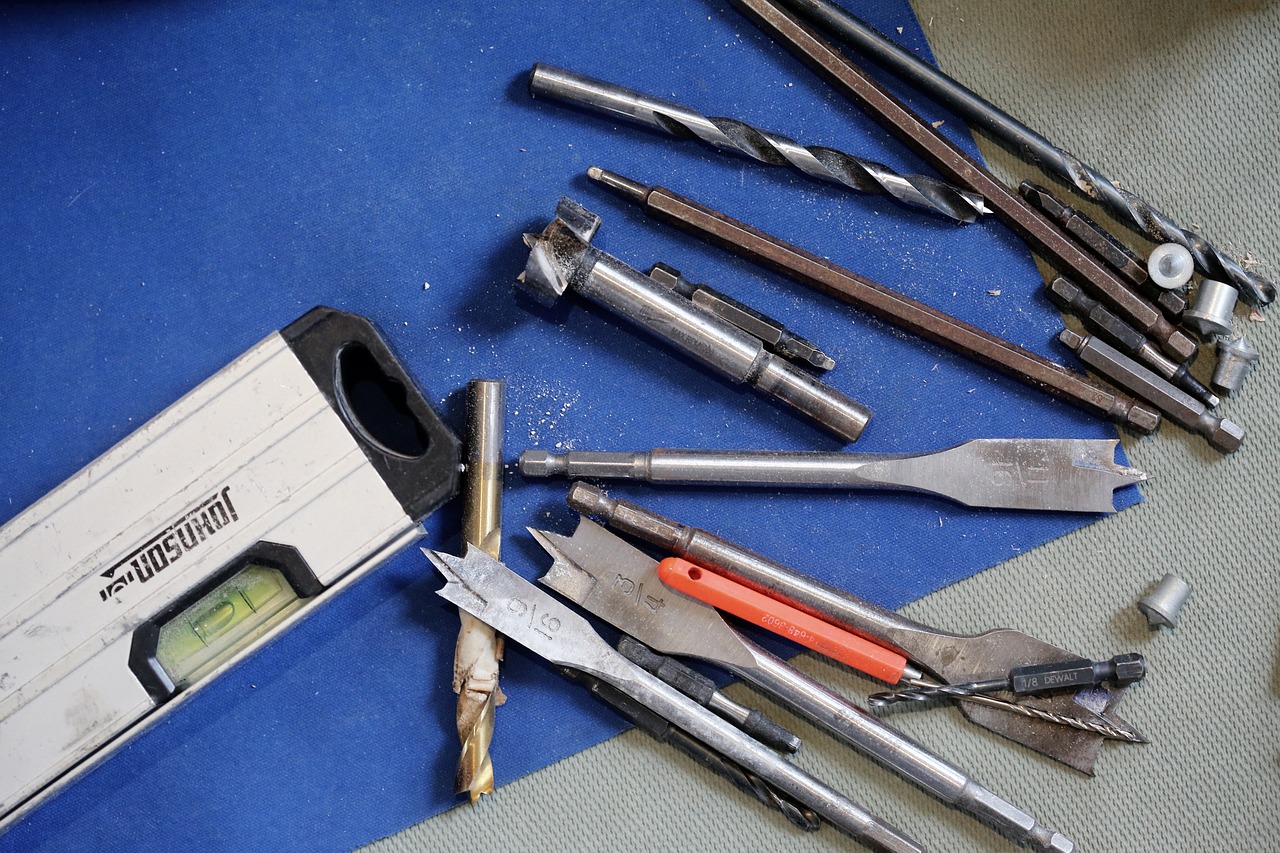
Recycling Old Clothes
Recycling old clothes is not just an eco-friendly practice; it’s also a fantastic way to ignite your child's creativity while crafting unique dress-up costumes. Instead of tossing out those worn-out garments, why not transform them into something magical? Imagine turning a simple oversized shirt into a pirate's tunic or a pair of old jeans into a rugged explorer's outfit. The possibilities are endless! By involving your child in the process, you can teach them the value of sustainability while encouraging their imaginative play.
To start, gather any old clothes that you no longer wear. Look for items that have interesting patterns, textures, or colors that could inspire a costume. Here are a few creative ideas to consider:
- Old T-Shirts: Cut them into capes or use them as the base for a superhero costume. A little fabric paint can add logos or designs!
- Skirts and Dresses: Transform these into elegant princess gowns or fairy outfits. Add some tulle or lace for that extra flair!
- Jeans: They can be turned into rugged outfits for adventurers or explorers. Pair them with a plaid shirt for that authentic look!
When recycling clothes, it’s all about creativity. Encourage your child to think outside the box. For instance, an old scarf can become a headband or a belt, while buttons and ribbons can serve as embellishments to enhance any costume. You can also engage in simple sewing techniques to modify the fit or style of the garments. If you're unsure where to start, consider these basic sewing techniques:
| Technique | Description |
|---|---|
| Hemming | Shorten or finish the edges of garments to prevent fraying. |
| Patchwork | Stitch together different fabric pieces for a unique look. |
| Appliqué | Add fabric shapes on top of existing clothes for decoration. |
Moreover, don’t forget to involve your child in the decision-making process. Ask them what characters they want to portray or what themes excite them the most. This collaboration not only makes the crafting process more enjoyable but also empowers your child to express themselves through their costumes. Remember, the aim is to have fun and let your imagination run wild!
In conclusion, recycling old clothes for dress-up play is a win-win situation. You save money, reduce waste, and most importantly, create lasting memories with your child through imaginative play. So, dig into that closet, let the creativity flow, and watch as those old clothes become the gateway to fantastic adventures!

Costume Accessories from Household Items
Creating stunning costume accessories from household items is a fantastic way to elevate your child's dress-up experience without breaking the bank. It's amazing how everyday objects can be transformed into magical pieces that spark imagination! For instance, an old cereal box can become a shield for a brave knight, while a pair of mismatched socks can easily turn into whimsical puppet arms. The key is to look at your home with a creative eye and see the potential in what you already have.
One of the simplest yet most effective accessories is a hat. You can craft a pirate hat from a black garbage bag or make a wizard's hat from a piece of cardboard. Just cut it into the desired shape, decorate it with some glitter or markers, and voilà! You have a hat that can transport your child into a world of fantasy. Don’t forget about masks! A simple paper plate can be transformed into a mask with just a few cuts and some paint. Add some elastic string, and your little one is ready to become anyone from a superhero to a fearsome dragon.
Another exciting idea is to use fabric scraps and old accessories to create unique props. For example, a broken necklace can be reimagined as pirate treasure, while leftover fabric can be turned into capes or sashes. A simple bandana can transform into a cowboy's neckerchief or a ninja's headband, depending on the adventure your child wants to embark on. The beauty of using household items is that it encourages children to think outside the box and use their creativity to invent new stories and characters.
Here are some fun ideas for accessories you can create:
- Wands: Use a stick from the yard, decorate it with ribbons and glitter to create a magical wand.
- Jewelry: Old buttons, beads, and strings can be crafted into necklaces or bracelets that add flair to any costume.
- Costume Props: Cardboard tubes from paper towels can become swords or telescopes with a little imagination and paint.
By incorporating these simple yet effective ideas, you can create a treasure trove of accessories that will not only enhance your child's dress-up play but also provide an opportunity for them to engage in creative thinking and problem-solving. So, gather those household items, roll up your sleeves, and let the crafting begin!
Q: What are some common household items I can use for costume accessories?
A: You can use items like cardboard boxes, old clothing, fabric scraps, paper plates, and even kitchen utensils to create unique costume accessories.
Q: How can I ensure the accessories are safe for my child?
A: Always supervise your child during the crafting process, avoid sharp objects, and make sure any materials used are non-toxic and child-friendly.
Q: Can we reuse costume accessories for different costumes?
A: Absolutely! Many accessories can be adapted for various costumes, allowing for endless creativity and fun.

Using Fabric Scraps
Fabric scraps are like hidden treasures waiting to be discovered in your craft drawer. Instead of tossing those leftover pieces from previous projects, why not transform them into something magical for your kids? With a little creativity and imagination, these small bits of fabric can become the building blocks for unique dress-up clothes that spark joy and inspire play.
Imagine a vibrant patchwork cape made from colorful fabric remnants, or a whimsical hat adorned with bits of lace and ribbon. The possibilities are endless! Not only does using fabric scraps promote sustainability, but it also encourages children to appreciate the value of resources. When kids see you repurposing materials, they learn the importance of reducing waste and being resourceful.
Here are some fun ideas for utilizing fabric scraps in your DIY costume creations:
- Patchwork Costumes: Sew together various fabric scraps to create a stunning patchwork dress or shirt. This is a fantastic way to showcase different colors and patterns, making each piece truly one-of-a-kind.
- Accessories: Use small pieces of fabric to make accessories like headbands, belts, or sashes. A simple strip of fabric can be tied around the waist to create a stylish belt for a princess or superhero costume.
- Fabric Flowers: Craft beautiful fabric flowers using scraps. These can be added to costumes, hats, or even used as hair accessories. Just cut the fabric into petal shapes, layer them, and secure them with a button or a stitch.
- Costume Layers: Layer different fabrics to create a more textured and interesting costume. For instance, a fairy costume can have a base layer of tulle with colorful fabric scraps layered on top for added flair.
When working with fabric scraps, it’s essential to embrace the imperfections. Each piece tells a story, and the quirky combinations can lead to the most imaginative creations. Encourage your kids to participate in the process; let them choose their favorite scraps and help with the design. This not only enhances their creativity but also strengthens their fine motor skills as they cut, sew, and assemble their costumes.
So, the next time you find yourself with leftover fabric, remember that those scraps can be transformed into something extraordinary. With a bit of imagination and collaboration, you can create enchanting dress-up clothes that will surely fuel your child's imaginative play!
Q: What types of fabric scraps are best for costume making?
A: Cotton, felt, and tulle are great options as they are easy to work with and come in various colors and patterns. Avoid stretchy fabrics for beginners, as they can be tricky to sew.
Q: How can I ensure the safety of costumes made from fabric scraps?
A: Always check for loose threads and ensure that any small embellishments are securely attached. Avoid sharp objects, and supervise children while they are wearing their costumes to prevent any accidents.
Q: Can I wash costumes made from fabric scraps?
A: Yes, most fabric scraps can be washed, but it's best to check the care instructions for each type of fabric. Hand washing is often gentler and helps maintain the integrity of the costume.
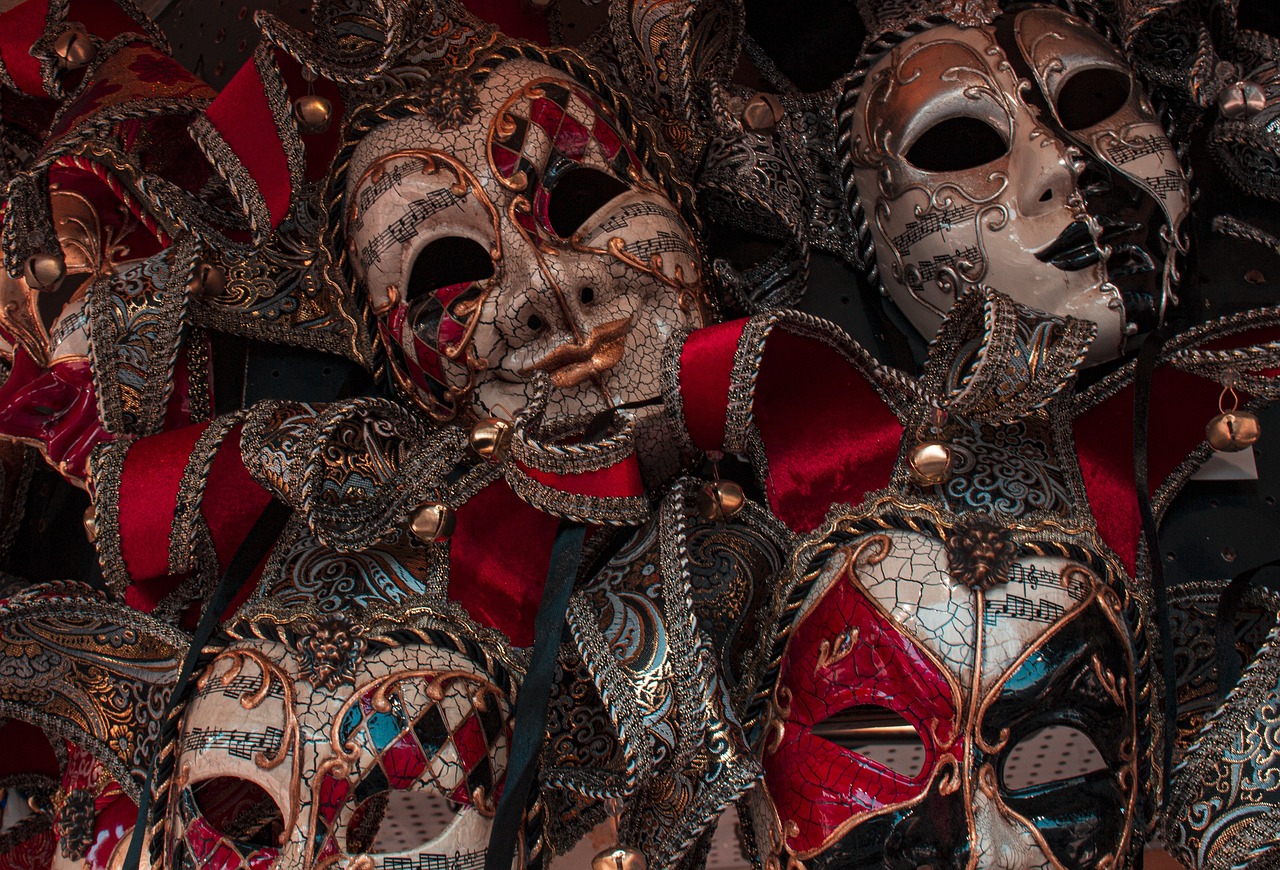
Simple Sewing Techniques
When it comes to crafting your own dress-up clothes, mastering a few can make all the difference. You don’t need to be a professional seamstress to create stunning costumes that your kids will love. In fact, with just a needle, thread, and a little imagination, you can transform ordinary fabric into extraordinary outfits. Let’s dive into some basic sewing techniques that are perfect for beginners!
One of the first techniques to learn is the running stitch. This simple stitch is the foundation of many sewing projects. It's easy to master and can be used for hemming, gathering fabric, or even creating decorative details. To do a running stitch, simply push the needle through the fabric and pull it back up, making small, even stitches along the way. This technique is perfect for attaching pieces of fabric together or adding embellishments to your costumes.
Another essential technique is the backstitch, which is known for its strength and durability. This stitch is ideal for seams that need to withstand a lot of movement, like those in dress-up clothes. To execute a backstitch, you’ll start by making a stitch, then go back one stitch and move forward again. This creates a solid line of stitching that’s perfect for reinforcing seams. Plus, it’s a great way to add a professional touch to your DIY creations.
Let’s not forget about fabric gathering, a technique that can add volume and flair to any costume. Gathering is perfect for creating ruffles on skirts or adding fullness to sleeves. To gather fabric, sew a loose running stitch along the edge, then gently pull the thread to bunch the fabric together. You can adjust the gathers to your liking, making it a versatile technique for various costume designs.
For those who want to add a splash of color or unique designs, appliqué is a fun technique to try. This involves sewing a piece of fabric onto another fabric to create shapes or designs. You can use this method to add fun patches or decorative elements to your costumes. Just cut out your desired shape, pin it onto your base fabric, and sew around the edges to secure it. The possibilities are endless!
Lastly, don’t underestimate the power of hand sewing. While machines are great, hand sewing can be more forgiving for beginners. It allows you to have more control over your work, especially when working on small or intricate details. Plus, it can be a relaxing activity to do while spending quality time with your child. So grab some fabric scraps and a needle, and start sewing!
With these simple sewing techniques, you’re well on your way to creating amazing dress-up clothes that will inspire hours of imaginative play. Remember, the key is to have fun and let your creativity shine. Don’t worry about making everything perfect; it’s the love and effort you put into your creations that will make them truly special!
Q: Do I need a sewing machine to make DIY costumes?
A: No, you can create beautiful costumes using just hand sewing techniques. A sewing machine can speed up the process, but it’s not necessary for beginners.
Q: What types of fabric are best for kids' costumes?
A: Lightweight cotton, felt, and jersey fabrics are great choices. They are comfortable, easy to work with, and come in a variety of colors and patterns.
Q: How can I make my costume more durable?
A: Use strong stitches like the backstitch for seams, and consider reinforcing areas that will be under stress, such as armholes and waistbands.
Q: Can I involve my kids in the costume-making process?
A: Absolutely! Let them choose colors, patterns, and even help with simple sewing tasks. It’s a fantastic way to bond and encourage their creativity.
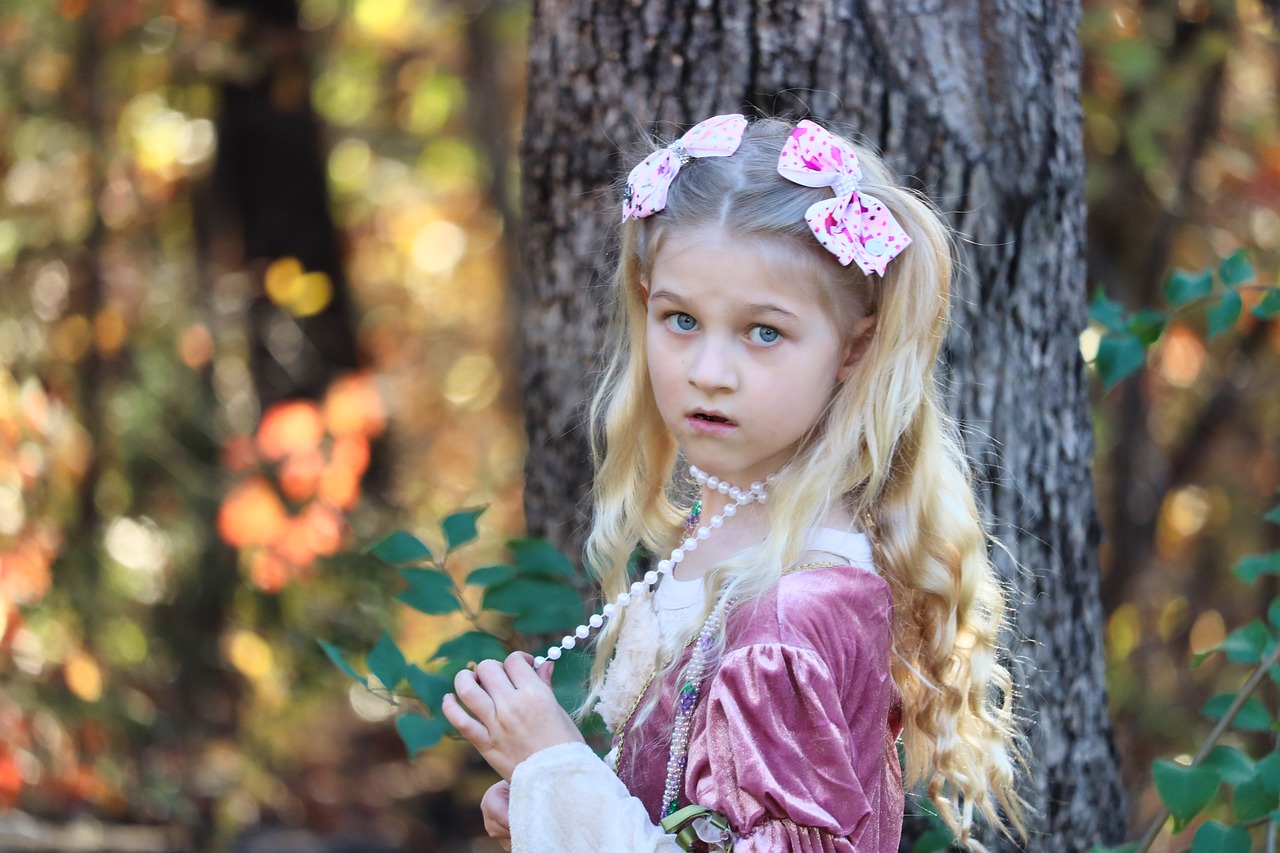
Theme Ideas for Dress-up Costumes
Choosing a theme for dress-up costumes can add a layer of excitement and creativity to your DIY projects. Themes not only spark the imagination but also provide a framework for kids to explore different characters and stories. Whether your child dreams of being a superhero, a historical figure, or a fantastical creature, the possibilities are endless. With just a little creativity and some basic materials, you can transform your home into a world of adventure!
One popular theme is superheroes. Kids love to emulate their favorite characters from comic books and movies. You can create capes from old bed sheets, masks from cardboard, and even design logos using fabric paint. Imagine your living room filled with mini superheroes, each showcasing their unique powers! This type of imaginative play not only entertains but also helps children develop a sense of justice and teamwork.
Another exciting theme is historical figures. This is a fantastic way to combine fun with learning. Kids can dress up as famous figures like Cleopatra, George Washington, or even Marie Curie. To create these costumes, you might use fabric scraps, old clothes, and some creativity. For instance, a simple white sheet can be fashioned into a toga for a Roman look, while a pair of suspenders can turn into a vintage outfit reminiscent of the early 1900s. Incorporating props like maps or books can further enhance the experience, making history come alive!
Seasonal themes can also inspire creativity. For example, during Halloween, you can explore spooky costumes like ghosts, witches, or even pumpkins. In the spring, why not create fairy or flower costumes? Each season offers a unique opportunity to craft costumes that reflect the time of year. You can even host a seasonal dress-up party where kids can showcase their creations, making it a fun community event.
For those who love the world of fiction, character inspirations from books and movies can be a treasure trove of ideas. Think of beloved characters like Harry Potter, Alice in Wonderland, or even characters from popular animated films. Creating these costumes can be as simple as using everyday clothing and adding a few key accessories. For instance, a simple black robe can transform into a wizard's cloak with the addition of a wand made from a stick and some paint. This not only promotes creativity but also encourages children to delve into the stories behind their favorite characters.
In summary, the theme you choose for dress-up costumes can significantly enhance your child's imaginative play. It provides a structured yet flexible way to explore different characters and stories, allowing for endless creativity. So grab those materials, let your imagination run wild, and watch as your home transforms into a vibrant world of make-believe!
Q: What materials do I need for DIY dress-up costumes?
A: You can use old clothes, fabric scraps, cardboard, and various household items. The key is to be creative and think outside the box!
Q: How can I make costume accessories?
A: Accessories can be made from everyday items. For example, you can create hats from paper, masks from cardboard, and props from recycled materials.
Q: Are there specific themes that work best for younger children?
A: Yes! Themes like animals, superheroes, and fairy tales are often popular with younger kids. They are simple to create and allow for lots of imaginative play.
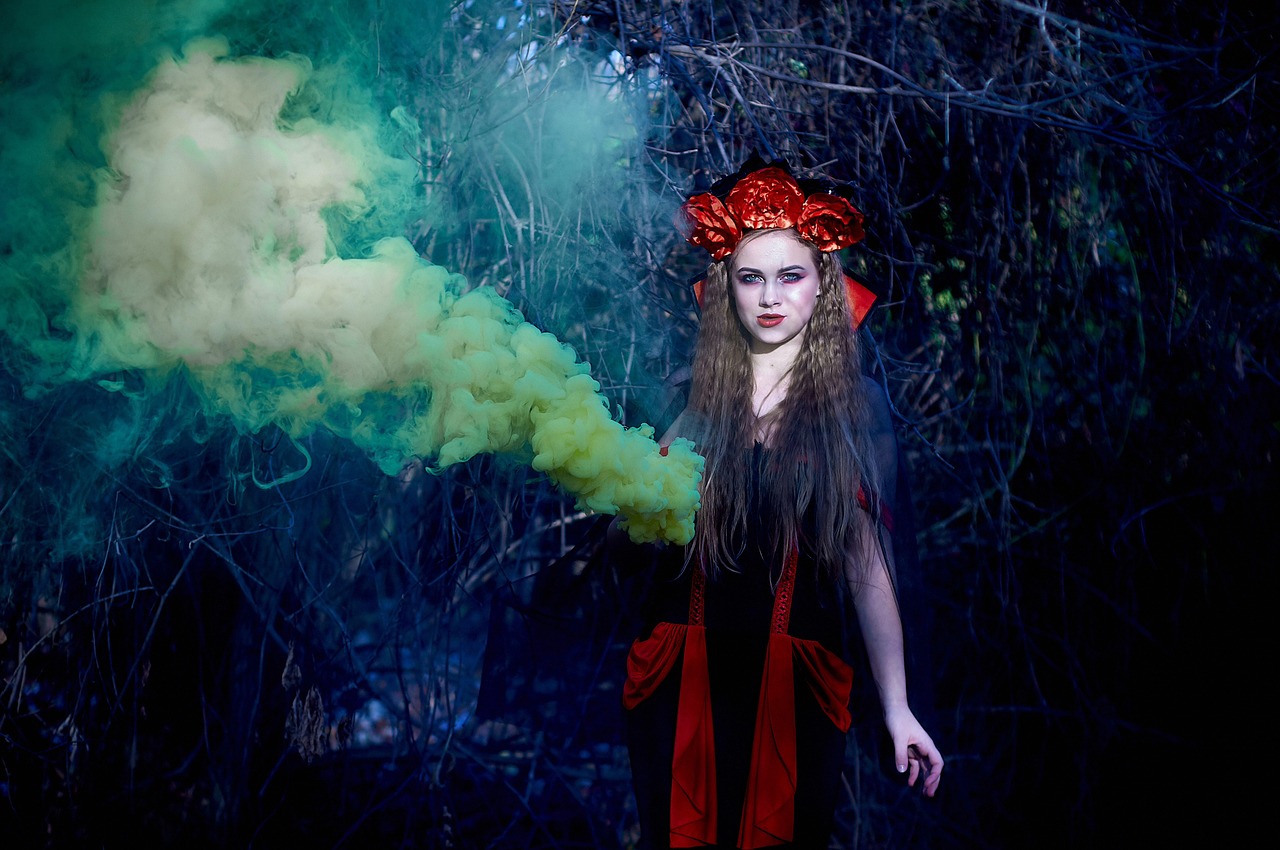
Seasonal Themes
When it comes to dress-up costumes, seasonal themes are like a treasure chest overflowing with possibilities! Each season brings its own unique charm and excitement, making it the perfect backdrop for imaginative play. Think about it: from the vibrant colors of autumn to the magical frost of winter, each season offers a plethora of ideas that can spark creativity and fun in children. Imagine your little one dressed as a pumpkin during Halloween or a snowman in the midst of winter festivities. The beauty of seasonal themes is that they can be adapted to suit any child's interests and preferences.
Let's break it down a bit. Seasonal themes can be categorized into several exciting ideas:
- Spring: Think of blooming flowers, buzzing bees, and playful animals. Costumes can include butterflies, bunnies, or even a gardener!
- Summer: This season is all about fun in the sun! Kids can dress up as beachgoers, pirates, or even tropical fruits like pineapples and watermelons.
- Fall: As the leaves turn golden and the air gets crisp, children can transform into scarecrows, witches, or even harvest-themed characters.
- Winter: The magic of winter can inspire costumes like Santa Claus, elves, or winter sports enthusiasts like skiers and snowboarders.
Creating costumes for these seasonal themes can be a delightful project for parents and children alike. Not only does it allow for quality bonding time, but it also encourages children to express themselves through their creations. For example, during spring, you can take an old white dress and add some colorful fabric flowers to create a lovely flower fairy costume. In summer, a simple beach towel can be transformed into a cape for a superhero ready to save the day at the beach!
Moreover, seasonal themes can also be tied into holiday celebrations. For instance, during Halloween, kids can dress up as classic monsters, while during Thanksgiving, they might enjoy being a turkey or a cornucopia. This not only enhances their playtime but also helps them learn about the significance of each season and holiday. It’s a wonderful way to combine education and fun!
In summary, seasonal themes offer an array of creative opportunities for dress-up play. They inspire kids to explore the world around them, learn about different times of the year, and engage in imaginative role-playing that is both entertaining and enriching. So, gather your materials and let the seasonal creativity flow!
Q: What materials do I need for seasonal costumes?
A: You can use a variety of materials including old clothes, fabric scraps, and household items. Think creatively!
Q: How can I involve my children in the costume-making process?
A: Involve them by letting them choose their themes, helping with the design, and assisting in the crafting. It’s all about teamwork!
Q: Are there specific themes for each holiday?
A: Yes! Each holiday has its own themes, such as spooky costumes for Halloween or festive attire for Christmas. Explore and have fun!
Q: How can I ensure the costumes are safe for my children?
A: Always use non-toxic materials, avoid small parts that can be choking hazards, and ensure that costumes are comfortable for movement.
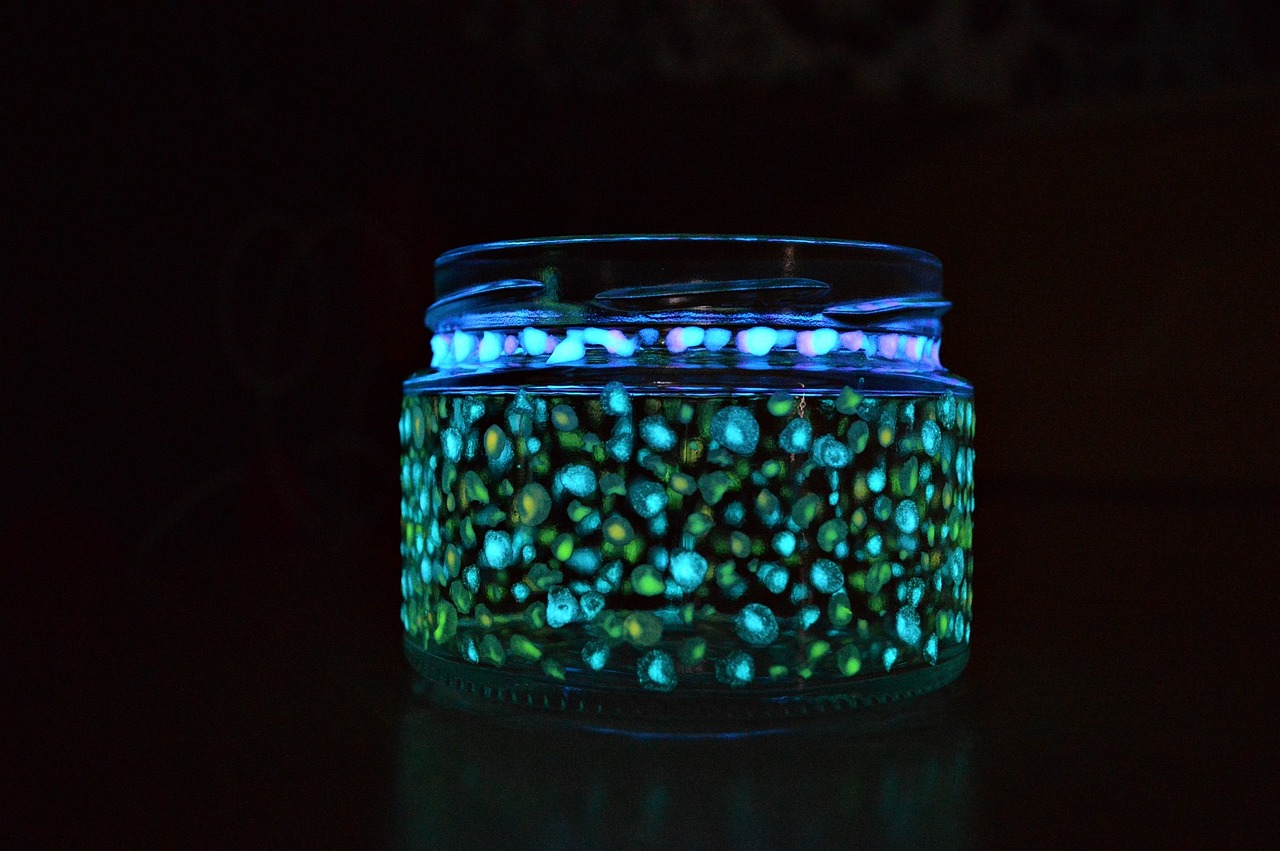
Character Inspirations
When it comes to DIY dress-up costumes, drawing inspiration from beloved characters can be a game changer. Imagine your little one transforming into their favorite superhero or fairy tale princess, sparking a world of imagination and adventure. The beauty of character-inspired costumes is that they can be created using simple materials found around the house, combined with a dash of creativity. Think about the characters that resonate with your child—maybe they adore the brave Wonder Woman, the whimsical Peter Pan, or the clever Hermione Granger. Each character offers a unique opportunity for imaginative play and storytelling.
To get started, consider the following popular characters and how you can create costumes that reflect their iconic looks:
| Character | Costume Ideas |
|---|---|
| Wonder Woman | Red top, blue skirt, gold accessories, and a DIY tiara. |
| Peter Pan | Green shirt and pants, a felt hat, and a toy sword. |
| Hermione Granger | Grey sweater, plaid skirt, a tie, and a wand. |
| Elsa (from Frozen) | Light blue dress, a sparkly cape, and a braid. |
These ideas are just the tip of the iceberg! You can easily adapt them based on what you already have at home. For instance, an old blue dress can be transformed into an Elsa gown with some sparkly fabric scraps for embellishments. The key is to think outside the box and encourage your child to contribute their ideas. This not only makes the process more fun but also helps them feel a sense of ownership over their costume.
Moreover, creating character-inspired costumes can be an excellent way to introduce your child to storytelling. As they dress up as their favorite characters, they might start reenacting scenes from movies or books, which enhances their verbal skills and boosts their confidence. You can even set up mini performances at home, where they can showcase their costumes and act out their favorite moments. This kind of imaginative play is not just entertaining; it’s also instrumental in their development.
So, gather your materials, unleash your creativity, and watch as your child's imagination takes flight. With a little effort and a lot of fun, you can create memorable dress-up experiences that will last a lifetime!
Q: What are some easy materials to use for DIY costumes?
A: You can use old clothes, fabric scraps, cardboard, and even household items like paper plates or plastic bottles to create unique costume elements.
Q: How can I encourage my child to be creative while making their costume?
A: Involve them in the process by asking for their ideas and preferences. Let them choose colors, styles, and accessories, and encourage them to think outside the box.
Q: Are there any resources for finding character costume ideas?
A: Yes! Websites, Pinterest boards, and even children's books can provide inspiration. Don’t forget to check out movies and shows your child loves for additional ideas!

Incorporating Cultural Elements
In a world that thrives on diversity, incorporating cultural elements into dress-up play is not just a fun activity, but a meaningful one. It allows children to explore and appreciate various cultures, fostering a sense of empathy and understanding. Imagine your little one donning a traditional Japanese kimono or a vibrant Mexican sombrero; these costumes are more than just fabric; they are gateways to learning about different customs, traditions, and histories.
When creating costumes inspired by various cultures, it’s essential to approach this with respect and authenticity. This means doing a little research to understand the significance of the attire. For example, while a sari is a beautiful garment worn in India, it also carries deep cultural meanings that resonate with the people who wear it. By sharing these stories with your child, you can enrich their imaginative play with knowledge and appreciation for the cultures represented.
One practical way to incorporate cultural elements is through storytelling. As you craft or wear these costumes, share tales from the culture they represent. This could be folklore, historical events, or even modern-day customs. For instance, if your child is dressed as a Native American, you could share stories about their rich traditions and connection to nature. This storytelling not only enhances the play experience but also helps children form a deeper connection with the costume they are wearing.
To inspire you further, here are some ideas on how to create costumes that celebrate cultural diversity:
- Research and Respect: Before creating a costume, learn about the culture and its traditional attire.
- Use Authentic Materials: If possible, incorporate fabrics or patterns that are representative of the culture.
- Engage in Cultural Activities: Alongside dress-up, consider cooking traditional dishes or listening to music from the culture.
By weaving these elements into your DIY costume projects, you not only create a fun and engaging experience for your child but also instill a sense of global citizenship. It's about nurturing a generation that is aware of and values diversity. Remember, the goal is to celebrate cultures, not appropriate them. This distinction is crucial in ensuring that our children learn to appreciate, rather than misrepresent, the rich tapestry of human traditions.
As you embark on this creative journey, keep in mind that the costumes your children wear can be a powerful tool for learning and connection. Whether it's through play, storytelling, or cultural exploration, the possibilities are endless. So, get those sewing needles ready, gather your fabric scraps, and let the journey of cultural discovery begin!
Q: How can I ensure that I am respecting cultures when creating costumes?
A: It’s important to research the cultural significance of the attire you are replicating. Focus on understanding the history and meaning behind the clothing and share this knowledge with your child.
Q: What materials can I use for cultural costumes?
A: You can use a variety of materials available at home, such as old clothes, fabric scraps, and craft supplies. The key is to creatively adapt these items while being mindful of the cultural elements you wish to represent.
Q: Are there any specific themes I should avoid?
A: Yes, avoid themes that may perpetuate stereotypes or misrepresent cultures. It's essential to approach costume creation with sensitivity and an open mind.
Frequently Asked Questions
- What materials do I need to create DIY dress-up clothes?
To get started with DIY dress-up clothes, you’ll need a variety of materials. Common household items like old clothes, fabric scraps, and even cardboard can be transformed into unique costumes. Don't forget to gather craft supplies such as scissors, glue, and markers to add a personal touch to your creations!
- How can I recycle old clothes into costumes?
Recycling old clothes is a fantastic way to create costumes! You can cut, sew, or embellish garments to give them new life. For instance, a simple t-shirt can become a superhero cape with a few snips and some fabric glue. Let your creativity run wild!
- What are some easy sewing techniques for beginners?
If you're new to sewing, don’t worry! Start with simple techniques like straight stitching and hemming. These basic skills are perfect for creating dress-up clothes without feeling overwhelmed. With a bit of practice, you’ll be sewing like a pro in no time!
- Can I use everyday items to make costume accessories?
Absolutely! Everyday items can be transformed into fantastic costume accessories. Think about using paper plates for masks, or old belts for pirate sashes. The possibilities are endless, and it’s a fun way to get creative with what you have at home.
- What are some fun themes for dress-up costumes?
Themed costumes can make dress-up play even more exciting! From superheroes to historical figures, the options are limitless. Seasonal themes, like spooky costumes for Halloween or festive outfits for Christmas, can also spark creativity throughout the year!
- How can I incorporate cultural elements into dress-up play?
Incorporating cultural elements into dress-up play can be a wonderful way to teach children about diversity. Choose traditional attire from various cultures, ensuring to respect their significance. This not only enriches playtime but also fosters an understanding of different traditions and values.



















